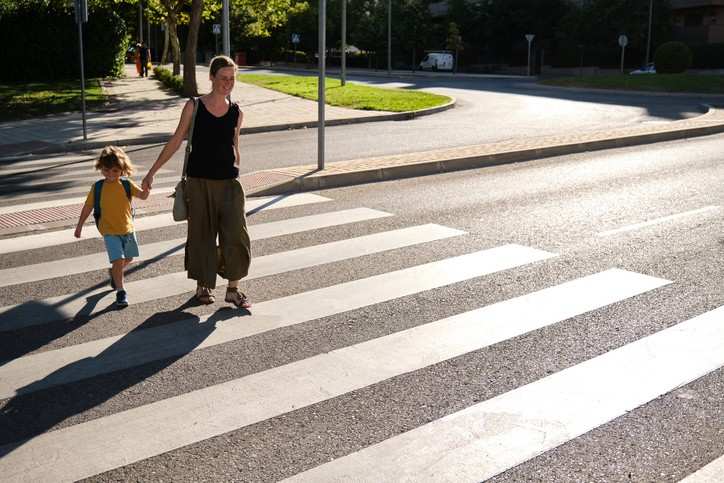In an ideal world, pedestrians always have the absolute right of way over vehicles. After all, pedestrians are completely exposed with no protective vehicle surrounding them. A collision between a pedestrian and a vehicle can easily result in devastating injuries or even death for the pedestrian.

However, the reality is that pedestrians do not always have the automatic right of way under Massachusetts laws and regulations. In certain situations, drivers have the legal right of way over pedestrians who fail to follow crossing rules.
When Pedestrians Have the Right of Way in Massachusetts
Pedestrians have the upper hand in specific situations outlined by Massachusetts General Laws Chapter 89, Section 11:
- Marked crosswalks: This includes crosswalks with painted stripes, flashing lights, or even unmarked crosswalks at intersections. When a pedestrian is within the crosswalk, drivers must stop and yield the right of way to allow them to cross safely, regardless of the presence of a walk signal.
- Intersections with stop signs or traffic signals: When a pedestrian has a green light or is already in the crosswalk when the light turns red, drivers must stop and yield the right of way.
- Yield signs: If a driver comes across the yield sign and a pedestrian is in the roadway or about to enter, they have to reduce the speed and let the pedestrian cross safely.
It is very important to remember that even when pedestrians have the right of way, they still have a responsibility to use crosswalks and obey traffic signals whenever possible.
Situations Where Pedestrians May Not Have the Right of Way
There are instances where pedestrians may not have the right of way:
- Away from intersections: When crossing at locations away from intersections where there are no crosswalks, pedestrians must yield the right of way to all vehicles on the roadway. It is illegal for pedestrians to suddenly walk or run into the path of a vehicle in a manner that makes it difficult for the driver to safely stop.
- Failure to use sidewalks: In Massachusetts, if there is a sidewalk provided and it is practicable to use it, pedestrians must utilize the sidewalk rather than walking along the roadway. If pedestrians opt to walk on the road instead of the sidewalk when it is reasonable to use the sidewalk, they do not have the right of way and must yield to vehicular traffic.
- Pedestrian crossing signals and crosswalks: When crossing at intersections with operating pedestrian crossing signals, pedestrians must obey the signals. If the “Walk” signal is active, pedestrians have the legal right of way to cross. However, if the “Don’t Walk” signal is flashing, pedestrians must wait for the next “Walk” signal before entering the crosswalk. Drivers can lawfully proceed if no pedestrians have the right of way. At intersections without pedestrian crossing signals, pedestrians have the right of way in marked crosswalks. However, they must not suddenly leave the curb and walk into the path of a vehicle that is already so close that it is difficult for the driver to safely stop. Essentially, pedestrians cannot just step out in front of fast-approaching traffic.
Pedestrian Safety is Paramount
While the laws might sometimes favor drivers in certain scenarios, the overriding principle is that all people operating vehicles on Massachusetts roads must exercise great care and caution to avoid striking pedestrians, even those who may have violated traffic regulations.
The potential consequences of pedestrian-vehicle collisions are so severe and devastating that both pedestrians and drivers should take every reasonable precaution to prevent such tragic events from occurring in the first place. Pedestrians must remain vigilant, avoid distractions, and obey all traffic regulations for their safety. Simultaneously, drivers need to proceed attentively and defensively, watching carefully for any pedestrians who may enter the roadway unexpectedly.
Only by pedestrians and drivers alike exercising the utmost care and following all traffic laws can we achieve the ideal of maximizing pedestrian safety while promoting orderly traffic flow.
Trust Professional Pedestrian Accident Attorneys
Pedestrian accidents can result in catastrophic injuries or loss of life. If you or a loved one has been injured in such an accident, consult the pedestrian accident attorneys at Altman Nussbaum Shunnarah right away. Our legal team can examine the specifics of your situation and advise you of your rights while ensuring you receive just compensation if negligence is involved.




